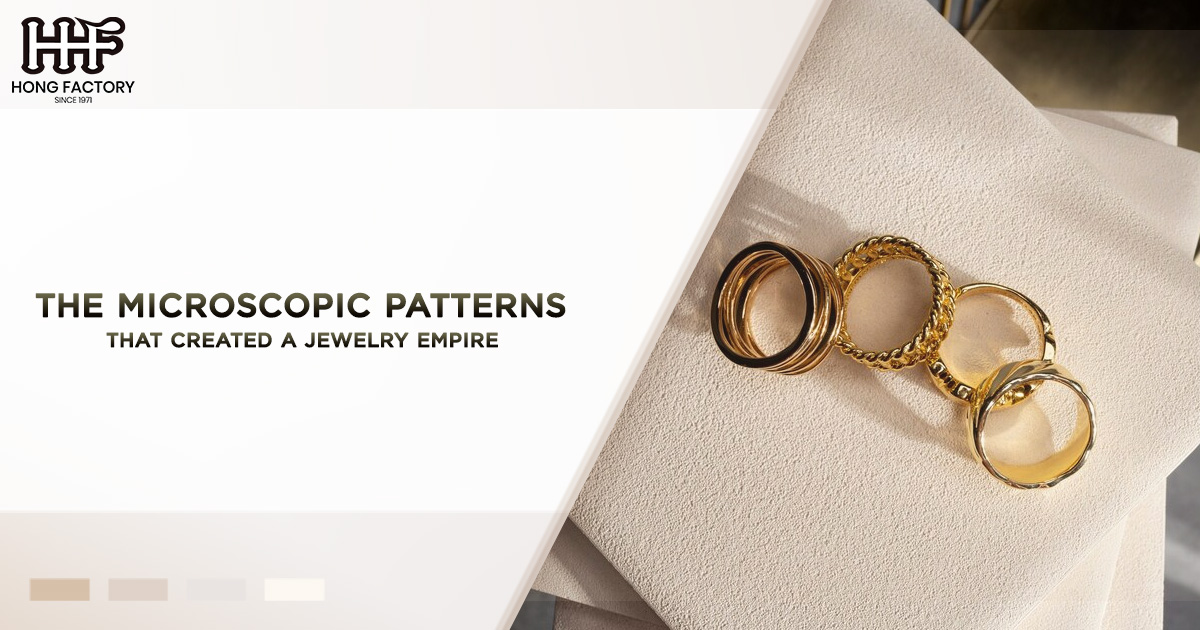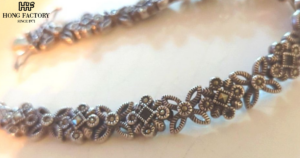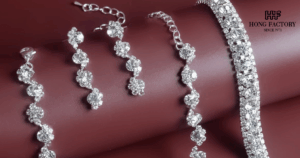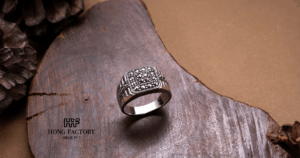In the world of jewelry design, inspiration can come from the most unexpected places. While many designers look to grand landscapes, cultural motifs, or historical influences, there exists a growing segment of artists and innovators who draw their creativity from something far subtler yet profoundly complex – microscopic natural patterns . These intricate designs, found in the cellular structure of plants, animals, and minerals, are becoming the cornerstone of a new wave of bio-inspired jewelry that merges art, science, and nature.
The Beauty Beneath the Surface
Nature has always been a source of inspiration for human creativity. From ancient carvings of flowers and vines to modern architectural designs that mimic fractals, the concept of imitating nature isn’t new. What has changed, however, is the ability to magnify and study the microscopic design underlying nature’s creations.
With advancements in technology, such as electron microscopes and high-resolution imaging, we can now explore the mesmerizing cellular structure of organic materials. These patterns—whether it’s the hexagonal lattice of a honeycomb, the spirals in a seashell, or the branching veins of a leaf—reveal a level of beauty and complexity invisible to the naked eye. Jewelry designers are increasingly tapping into this hidden world as a way to create pieces that are not only visually stunning but also imbued with deeper meaning.
Microscopic Design in Jewelry – A Bio-Inspired Revolution
What is Bio-Inspired Jewelry Design?
The term “bio-inspired” refers to the practice of drawing inspiration from the natural world, particularly from structures, systems, and phenomena that occur within it. Designers in the jewelry world are using images of microscopic patterns —such as those found in cells, crystals, and organic tissues—to craft unique and innovative pieces.
By studying these patterns, jewelers can mimic their geometry, texture, and form, resulting in stunning jewelry that reflects the perfection of nature. This isn’t just about aesthetics—bio-inspired designs also connect wearers to the natural world, evoking a sense of wonder, harmony, and interconnectedness.
Key Examples of Microscopic Patterns in Jewelry Design
- Honeycomb Patterns
The honeycomb, formed by bees to store honey and pollen, is a classic example of a naturally efficient and beautiful microscopic design. Its hexagonal shape has inspired countless jewelry pieces, from minimalist earrings to intricate gold necklaces. Designers are drawn to the honeycomb not only for its symmetry but also for what it represents—community, productivity, and natural engineering.
- Cellular Structures in Plants
The cellular structure of plant leaves, stems, and petals reveals fascinating patterns when viewed under a microscope. These include circular clusters, vein-like grooves, and fractal-like distributions. Jewelry inspired by plant cells often features intricate, lace-like designs, mimicking the delicate beauty and resilience of nature’s smallest building blocks.
- Crystallization and Mineral Grids
Minerals and gemstones themselves are products of natural processes, and their crystalline structures offer a wealth of inspiration. When magnified, crystals display repeating patterns that reflect their orderly atomic arrangement. Some contemporary jewelers recreate this structural beauty in precious metals, combining geometric rigidity with artistic fluidity.
- Microbial World
Even microorganisms, such as bacteria and algae, display intricate forms and decorations at the microscopic level. These patterns are often circular, radial, or spiraling, and their dynamic, organic shapes are translated into avant-garde jewelry designs that challenge traditional norms.
The Technology Behind Microscopic Design
To replicate microscopic patterns in jewelry, designers rely on cutting-edge tools and techniques
Advanced Imaging Techniques
Electron microscopy and macro photography allow designers to capture detailed images of microscopic patterns. These visuals serve as a direct blueprint for turning nature’s smallest designs into wearable art.
Computer-Aided Design (CAD)
CAD software has revolutionized the jewelry industry, enabling designers to scale up microscopic patterns and translate them into three-dimensional forms. Using these programs, they can experiment with textures, shapes, and dimensions in ways that were previously impossible.
3D Printing and Laser Cutting
Once a pattern is finalized, 3D printing and laser cutting technologies come into play. These tools allow jewelers to recreate intricate bio-inspired designs with incredible precision, whether it’s engraving tiny details or building complex, multi-dimensional structures.
The Emotional and Philosophical Appeal of Natural Patterns
Jewelry has always been more than mere adornment; it serves as a statement of identity, values, and emotion. Designs inspired by natural patterns tap into something deeply universal – our innate connection to the natural world.
- Symbolism – Patterns such as spirals or fractals often symbolize growth, continuity, and the infinite. Wearing these designs lets individuals express their personal journeys and shared existence with nature.
- Sustainability and Consciousness – Many bio-inspired jewelry brands emphasize sustainability, using recycled metals and ethically sourced gemstones. These practices align with the values of customers seeking to engage with nature without harming it.
- Uniqueness – Because no two patterns in nature are identical, bio-inspired jewelry offers a sense of individuality. Each piece, even if based on the same design, becomes one-of-a-kind, mirroring the diversity of life itself.
Building a Jewelry Empire with Bio-Inspired Design
The growing popularity of microscopic and bio-inspired designs isn’t just a trend—it’s the foundation of a burgeoning industry. Here’s how jewelry brands are leveraging this natural aesthetic to build successful businesses
- Storytelling as a Marketing Strategy
Consumers are increasingly drawn to products with a narrative. Jewelry brands that emphasize the connection between their designs and the natural world are tapping into a powerful marketing strategy. For instance, sharing the story of how a piece mimics the cellular structure of a lotus leaf can create an emotional bond with buyers.
- Collaborating with Scientists and Artists
Jewelry designers are joining forces with scientists, botanists, and photographers to gain deeper insights into nature’s patterns. These collaborations not only enrich the designs but also add credibility and substance to their collections.
- Sustainability as a Core Value
By aligning their designs with eco-conscious practices, bio-inspired jewelry brands appeal to a growing demographic of environmentally aware consumers. This includes using sustainable materials, reducing waste, and donating a portion of profits to conservation efforts.
- Technological Innovation
Brands that embrace new technologies, such as 3D printing, stay ahead of the curve by offering cutting-edge designs that are both intricate and cost-effective.
The Future of Microscopic Design in Jewelry
As technology advances and our understanding of nature deepens, the potential for bio-inspired jewelry is virtually limitless. Here are some trends to watch out for
- Customizable Bio-Inspired Designs – Imagine being able to design your own jewelry based on your favorite natural pattern, from a snowflake to the structure of DNA.
- Smart Jewelry – Combining bio-inspired designs with wearable technology could result in jewelry that’s not only beautiful but also functional, such as monitoring your health metrics.
- Integration with Biotechnology – Future jewelry innovations may involve living materials, such as bioengineered microbes that glow or change colors based on the environment.
Conclusion
The microscopic patterns of the natural world hold infinite potential for creativity and innovation. By tapping into these designs, jewelry makers are not only revolutionizing the industry but also creating a deeper connection between people and the environment.
As the jewelry empire built on bio-inspired design continues to grow, it challenges us to see the world differently—to look closer, think deeper, and appreciate the extraordinary beauty of the smallest things. With microscopic design as its foundation, this movement proves that even the tiniest patterns can inspire the grandest creations.
So next time you admire a stunning piece of jewelry, take a moment to wonder – could it be the cellular structure of a leaf or the fractal geometry of a crystal that lies at its heart? You might just be wearing a masterpiece of nature itself.




